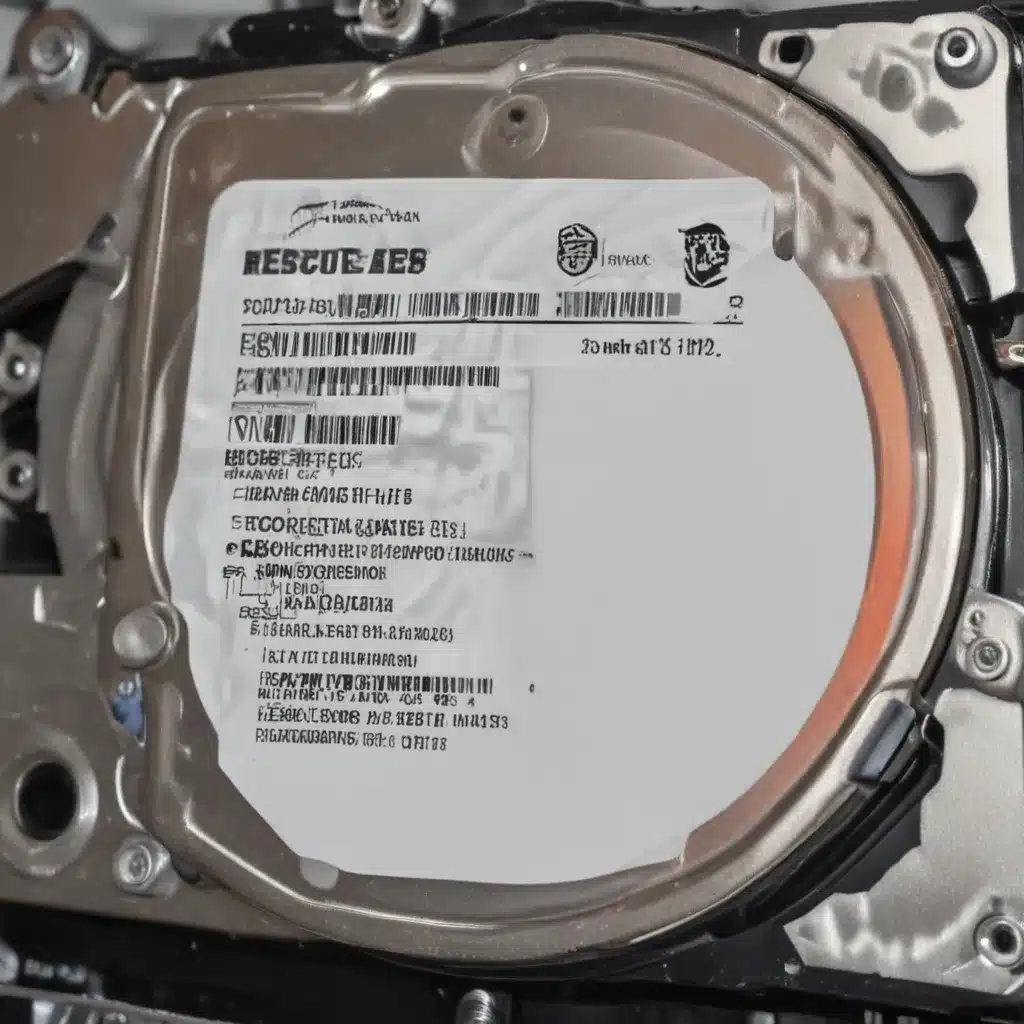Facing the Unthinkable: When Your Hard Drive Fails
Picture this: you’re working on an important project, a proposal that could make or break your career, and suddenly, the unthinkable happens. Your computer’s hard drive crashes, and all of your hard work seems to vanish into thin air. Panic sets in, and you find yourself frantically searching for a way to rescue your precious data.
As someone who has been there, I can assure you that it’s not the end of the world. While a hard drive failure can be a daunting and stressful experience, there are steps you can take to recover your files and get back on track. In this comprehensive guide, I’ll walk you through the process of rescuing important files from a damaged or corrupted hard drive, drawing on the expertise from leading tech communities [1] [2] [3] [4] [5] [6] [7] [8].
Identifying the Problem: Recognizing the Signs of a Failing Hard Drive
The first step in recovering your data is to identify the problem. If your computer is acting sluggish, making strange noises, or you’re experiencing frequent crashes or freezes, these could be signs of a failing hard drive. It’s important to act quickly, as the longer you wait, the more damage can occur, and the harder it may be to retrieve your files.
Backing Up Your Data: A Crucial First Step
Before you attempt any recovery efforts, it’s essential to back up your data. This may seem obvious, but many people overlook this crucial step, only to find themselves in a much more dire situation when their hard drive completely fails. If you have a secondary storage device, such as an external hard drive or a cloud-based storage solution, transfer your important files there immediately.
Assessing the Damage: Determining the Extent of the Problem
Once you’ve backed up your data, it’s time to assess the extent of the damage to your hard drive. Symptoms like clicking noises, slow performance, or files that won’t open can all be indicators of a more serious issue. In some cases, the hard drive may be physically damaged, while in others, the issue could be a result of software or file corruption.
Choosing the Right Recovery Method: Evaluating Your Options
Depending on the nature of the problem, there are several recovery methods you can try. If the issue is software-related, you may be able to use built-in Windows or macOS tools to repair the file system or recover deleted files. [1] [2] [3] [4] [5] [6]
For more serious physical damage, you may need to enlist the help of a professional data recovery service. These experts have the specialized equipment and expertise to extract data from even the most severely damaged hard drives. [7]
Recovering Your Files: A Step-by-Step Guide
Regardless of the recovery method you choose, the process will generally involve the following steps:
-
Secure the Drive: If your hard drive is physically damaged, it’s crucial to handle it with care to prevent further damage. Avoid any sudden movements or dropping the drive, as this can exacerbate the problem.
-
Create a Disk Image: Create a complete copy of the hard drive, including any damaged or corrupted areas. This will allow you to work on the copy, preserving the original in case the recovery process fails.
-
Scan the Drive: Use specialized recovery software to scan the disk image for any salvageable files. These tools can often recover data from even the most severely corrupted or damaged drives.
-
Repair File Systems: If the issue is software-related, you may need to use tools to repair the file system, such as the chkdsk command in Windows or the First Aid utility in macOS. [1] [2] [3] [4] [5] [6]
-
Retrieve Your Files: Once you’ve identified the recoverable files, you can transfer them to a safe location, such as an external hard drive or cloud storage.
Preventing Future Disasters: Developing a Robust Backup Strategy
The best way to avoid the stress and heartache of data loss is to have a solid backup strategy in place. This means regularly backing up your important files to a secondary storage device or cloud-based solution. By taking this proactive step, you can ensure that even if disaster strikes, you’ll be able to quickly and easily restore your data.
Conclusion: Embracing the Challenge, Reclaiming Your Data
Facing a damaged or corrupted hard drive can be a daunting experience, but with the right knowledge and tools, you can overcome the challenge and reclaim your precious data. By following the steps outlined in this guide, you’ll be well on your way to rescuing your files and getting back to work. Remember, data recovery is a delicate process, so don’t hesitate to seek professional help if the situation requires it. With a little perseverance and a bit of tech-savvy, you can emerge from this ordeal stronger and more resilient than ever before.
References
[1] Microsoft Community, “How to Recover Data from a Corrupted Hard Drive on Windows 11,” https://techcommunity.microsoft.com/t5/windows-11/how-to-recover-data-from-a-corrupted-hard-drive-on-windows-11/td-p/4091084
[2] CCleaner Community, “Recovering Data from Damaged/Corrupted Hard Drive,” https://community.ccleaner.com/topic/46923-recovering-data-from-damagedcorrupted-hard-drive/
[3] Apple Discussions, “Recover Data from Corrupted Hard Drive,” https://discussions.apple.com/thread/8561135
[4] Reddit, “Recovery Files from Corrupted External Hard Drive,” https://www.reddit.com/r/datarecovery/comments/wqq2gc/recovery_files_from_corrupted_external_hard_drive/
[5] Seven Forums, “Need to Recover Files from Corrupt Unreadable NTFS Harddrive,” https://www.sevenforums.com/backup-restore/211684-need-recover-files-corrupt-unreadable-ntfs-harddrive.html
[6] Unix & Linux Stack Exchange, “How to Use a Bootable USB Stick and Linux to Recover Data from a Broken Hard Drive,” https://unix.stackexchange.com/questions/176403/how-to-use-a-bootable-usb-stick-and-linux-to-recover-data-from-a-broken-hard-dri
[7] LinkedIn, “How to Recover Data from a Failed Hard Drive,” https://www.linkedin.com/pulse/how-recover-data-from-failed-hard-drive
[8] Microsoft Answers, “OneDrive Corrupted Files,” https://answers.microsoft.com/en-us/msoffice/forum/all/onedrive-corrupted-files/181006dd-6c36-483a-aca3-a2b8308f971a













